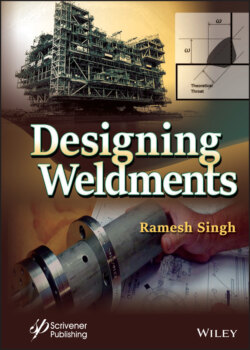Читать книгу Designing Weldments - Группа авторов - Страница 38
2.1.5 Elevated Temperature Properties
ОглавлениеThe behavior of metal at the elevated temperature assumes importance for primarily following reasons.
1 1. Welding operation involves heat, and higher temperature, it is essential that we understand the changes in the metal’s mechanical properties, and predict its behavior under induced strain during welding. Going through the cycle of heating and cooling can significantly alter the properties of base metal, and the weld itself.
2 2. Metals are formed and shaped to be useful for the specific structural applications. It is important that the metal so formed and worked on possess the desired. During hot working the metal may develop flaws that may subsequently reduce the strength of the structure.
3 3. May weldments are exposed to high temperature service.
Strength of the metal reduces as the temperature rises, the elastic modulus is reduced, and plastic deformation is more active.
A weldment during welding experiences rapid rise of temperature to its melting point, and then it rapidly cools. If the structure or its any member is restrained the hot weld metal and the HAZ area goes through complex thermal strains. This can lead to weld or HAZ or both cracks, or distortion occurs in the structure, due to the shrinkage stress.
Apart from the normal strength and ductility parameters are not very effective in predicting the behavior of metal at elevated temperature. Other properties such as time at the elevated temperature, and the applied stress give a new parameter to consider, the creep property of the metal. The metal at high temperature and under stress continues to creep over the time to its failure, the time is an important factor here.
